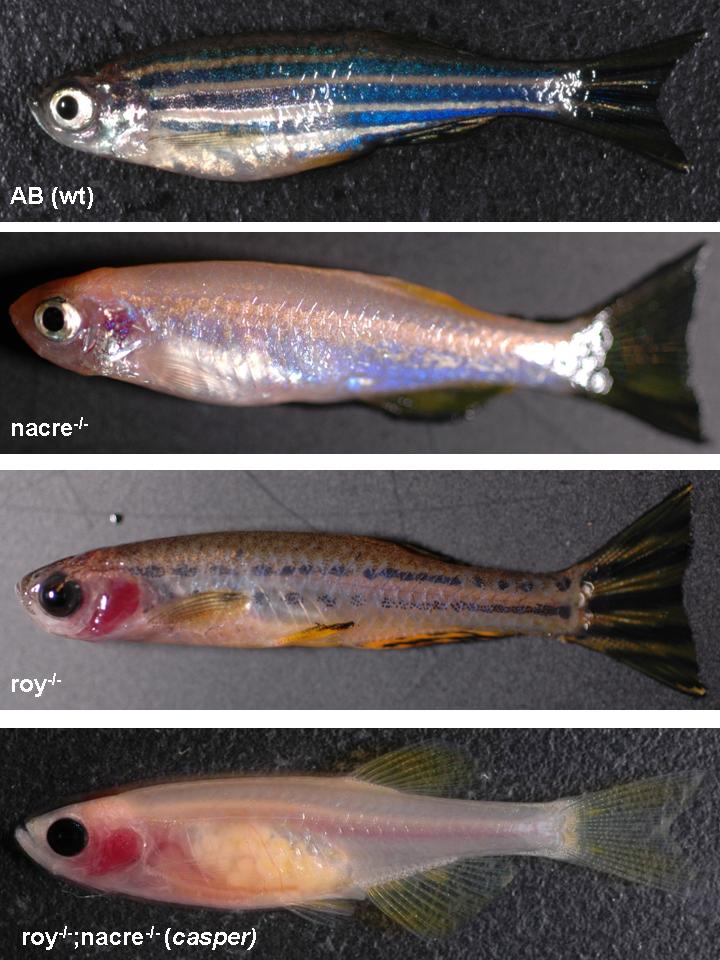Figure 1.

Zebrafish pigmentation mutants exhibit defects in specific neural crest derived populations. A wild-type zebrafish (1A) demonstrates alternating patterns of deeply pigmented stripes comprised largely of melanocytes. The interstripe regions, devoid of melanocytes, contain primarily reflective iridophores and yellowish xanthophores. The nacre mutant (1B), due to loss of mitf, shows a loss of embryonic and adult melanocytes, with a compensatory increase in iridophore numbers. The roy orbison mutant (1C), whose genetic defect is currently undefined, shows a striking abnormality of eye pigmentation, a severe disruption of melanocyte numbers/patterning, and a complete loss of the iridophore layer. The compound roy;nacre double homozygous mutant (1D), which we have named casper, shows the effect of combined melanocyte and iridophore loss, in which the body of the adult fish is largely transparent due to loss of light absorption and reflection.
